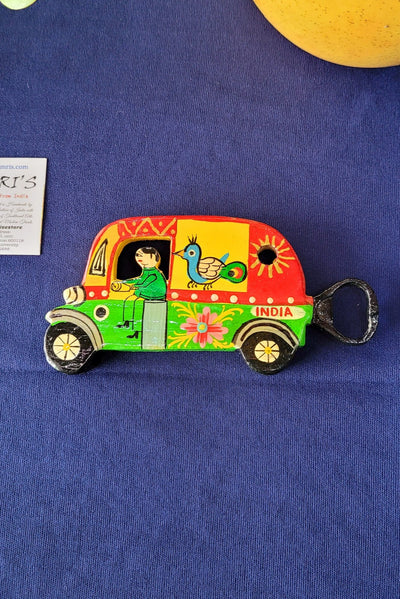Kutch Handicraft - The work that goes into each product
The creative artisans of Kutch possess magic in their hands and oodles of imaginative power in their heads. Let us explore the processes they follow for creating their beautiful handicrafts.
Ajrakh Block Printing

The Ajrakh block printing process is divided into two major steps: block printing and dyeing. The block printing process involves carving intricate motifs onto wooden blocks and using them to print onto Ajrak print fabric. Once the fabric is block printed, it is then dyed using natural dyes such as indigo, madder root, and turmeric. The block printed portions resist the dyes while the remaining portions get exposed, resulting in a beautiful symphony of colours and patterns. This dyeing process can take several days to complete, as it involves multiple dyeing and washing cycles. The entire process is very labour-intensive and requires a great deal of skill and patience.
Bandhani

Bandhani is a method of binding small knots and dyeing them in different colours to produce beautiful patterns. The cloth is washed to remove traces of starch, and then bleached to attain a clear base. It is then folded into two or four layers depending on the thickness of the cloth. A designer marks the layout of the pattern on the material using wooden blocks dipped in a natural clay earth pigment mixed with water. The cloth is tied from the areas not to be dyed. The process requires patience, expertise and meticulousness on part of the artist. The folds of the material within the small motif have to be lifted and tied together. The material with the first set of ties is dyed yellow. The material is again tied and dyed into red or green.
Bela Block Printing

The process of Bela block printing is a fascinating blend of multiple steps and techniques. The artisans first apply an alum paste to the fabric, followed by exposure to sunlight for enhanced colour fastness. After permanent dyeing, the fabric undergoes another round of washing. Next, the artisans print the fabric with a mud paste, imparting a blackish hue by boiling it in water containing iron rust. The wooden blocks used in this process are meticulously hand-carved by skilled artisans or their family members and come in various shapes and forms, showcasing the artisans' creativity. Bela block prints are renowned for their vivid and eye-catching colour schemes, which typically include natural and vegetable dyes. The colours red and black, known for their superior colorfastness, are prominently used in Bela printing.
Mashru

Mashru is a woven cloth that is a blend of silk and cotton. It is a double-layered material with a thick cotton base and covered with an almost single stranded silken warp and woof. Mashru is a stout, silken, warp-faced fabric textile with a variegated pattern. In its weaving, the loom brings the cotton yarn down and the silk fibers up. This produces a cloth that exhibits a silk face and cotton backing. Hence it is a mix of silk and cotton, although with a satin finish. The result is a thick and heavy cloth with less lustrous and feminine-like pure silk.
Now that we have understood the immense work involved in creating each product, let us help these artisan villagers of Kutch keep their skills alive. It is always better to visit them and buy directly from them. But for those who are not able to take a trip, we have loaded on Kutch Handicrafts, to buy for your personal use or for gifting your loved ones.
















Leave a comment